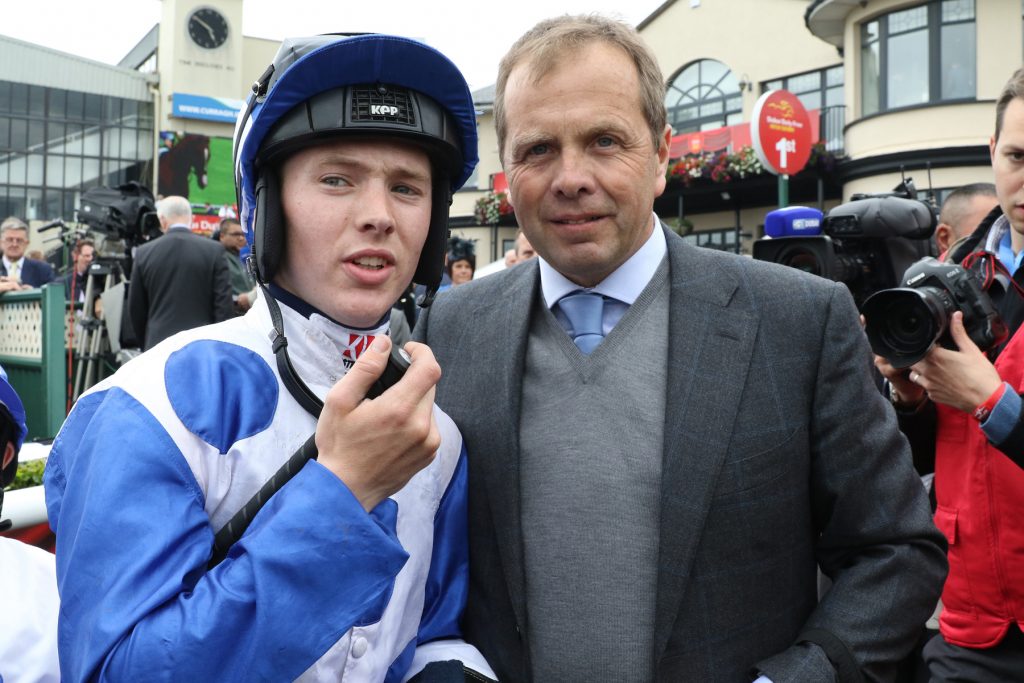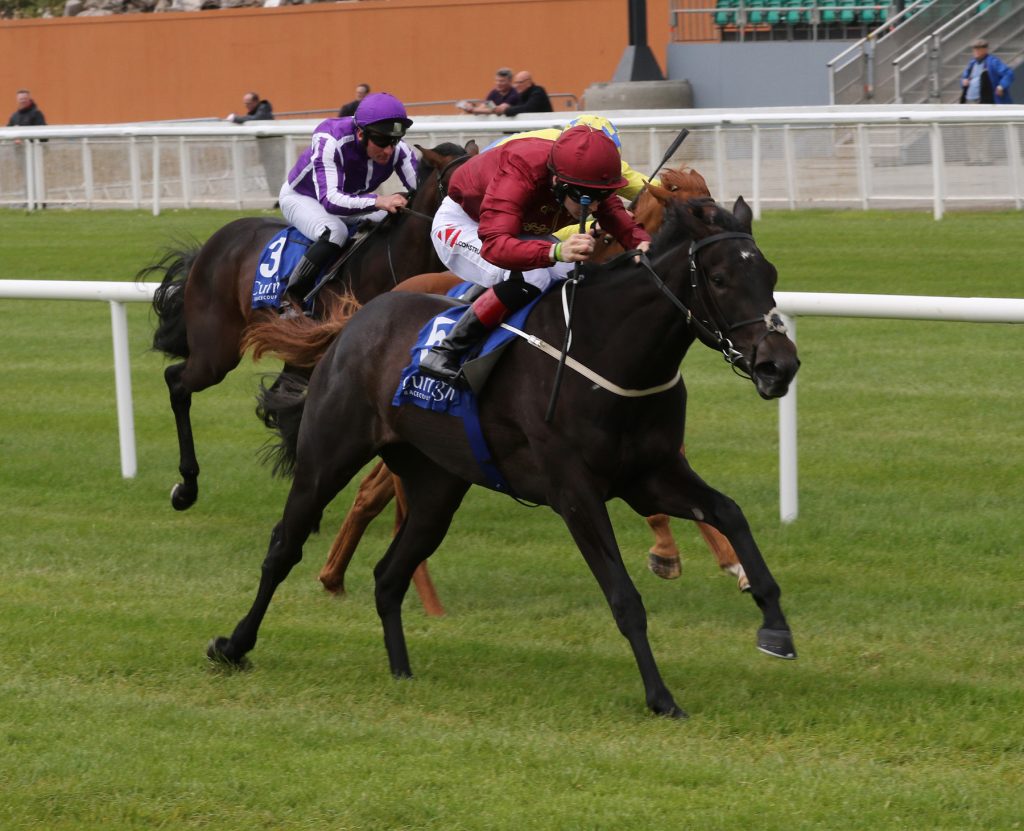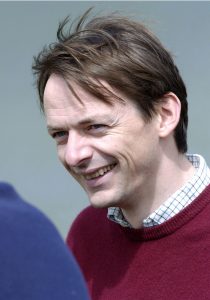You had four seasons as a National Hunt jockey in England in the 1980s, riding some 50 winners before injury ended your career. Despite training a Grade 1 winner over fences, you soon decided to focus on the Flat. Why?
I love two-year-olds and their quick turn-around factor. Basically, I get bored very quickly and once I know a horse’s level or rating I need to move on, especially if it’s a bad one, which sadly can be quite often.
I’ll go to an owner and explain the horse is a 0-60, that it may win a small race or it may not, but will cost the same amount to train as the best horses in the yard.
So I recommend moving on; it’s a business decision. Of course, it is the anticipation of the unknown in an unraced two-year-old that excites me.
The Irish training business appears to be as tough and competitive as it is in Britain. How do you cope with an economic situation that has forced a number of your fellow trainers into early retirement?
I would say the Irish Flat scene is as competitive as it gets. We meet Aidan O’Brien’s runners every day here, whereas you guys in England may meet the top stables mainly at weekends.
ome trainers might call that a curse, but I consider it a good thing. I regard myself as a much better trainer as a result of competing with the elite.
Aidan raises the bar every year and I applaud him for that because I have to keep trying to improve my own standards to stay anywhere near him.
The only difference is I can’t afford Galileos; I have to go to war with everything bar the Galileos. I have the best staff, the best facilities and I do the best with what I have.
Training, in my opinion, is about sourcing the horse. If you just sit back and wait for what comes through the gate then you will be disappointed and quickly go out of business.
However, if you buy something you’d like to train you have more idea of what you’re getting and there might even be a bonus at the end.
Sadly, we have to keep selling to stay in business, which makes the job of keeping in touch with the top stables all the more difficult.
Is there anything HRI can do to aid struggling trainers in Ireland?
It sounds trite, but training is the same as any business; the harder you work the more successful you will be as long as you work smart. Some trainers think they are owed a living the moment they take out a licence. But they are not.
New guys come and go in our game and I’ve always said that the test of time is the ultimate true standard. HRI need to modernise their systems, which in turn will make our lives easier.
They must continue to upgrade racetrack facilities for owners, who are the lifeblood of the game and are sometimes taken for granted, though some owners’ amenities have improved recently.
The system for naming horses could also be speeded up, bringing it into line with the UK.
Horses such as Wade Giles (Destined For Glory), Strada Colorato (Gold-Fun), Watsdachances and more recently Doctor Geoff have impressed for you before being bought to race abroad. Is it a mixture of pride and regret when you lose such quality animals?
My family will tell you how down I get when this happens. I am very competitive and love taking on the big boys when I can, but to stay in business we have to sell our good ones.
So sourcing a decent horse and knowing that eventually I’m going to have to sell hurts, but I have to accept it’s a necessary evil. When Qatar joined me I thought, ‘lovely’, now I can keep some talented ones to race. But they sell more than I do.
At the end of the day it’s down to prize-money; if we had a better structure for our good horses then maybe we wouldn’t have to part with so many. Though, ultimately, everything has a price.
Sean Jones is one of your biggest supporters and owned Cappella Sansevero, a 25,000gns yearling purchased by Qatar Racing for £1.3 million. What makes this trainer/owner partnership work so well?
One hundred per cent trust on both sides. Sean has had horses with me since the turn of the century. He’s one of life’s gentlemen, a real family man and we’ve grown together over time.
He gets a real kick out of any winner we have, however big or small. I just can’t wait to train him a Group 1 winner.

Lyons and stable jockey Colin Keane, pictured in the Sean Jones silks, are a potent combination
You have said that sourcing horses is a very important part of your business. What system do you use, who helps you and what are the most important features you look for in a prospective racehorse?
We’ve had to learn from scratch, and from our mistakes. But Roger Marley, an old riding mate of mine, has become a huge part of our system.
He used to work for Peter Easterby and is as good a judge as there is in the game.
Between Roger and his faithful sidekick, John Cullinan, I’m in very safe hands. Basically they knock off all the scrub at the sales and leave a list for me to look at.
I will either like a horse or not on first impressions, but it does have to walk well and have a nice head. Sadly the prices are becoming ridiculous, which is really making my job harder every year.
If you could make one change to benefit the Irish racing industry, what would it be and why?
I would close a number of tracks that are completely unsuitable for proper modern Flat racing, bearing in mind we are a nation of horse suppliers, selling to Hong Kong and America. Running around gaffs is not conducive to that.
Flat horses that are being earmarked for Hong Kong or America don’t need to be running around some courses that are not much better than fields. And the Irish will know which courses I’m talking about.
When you’re asked, ‘Where did it win?’ and the answer is ‘Leopardstown’, that can clinch a sale. But not winning at some of those lesser tracks, I’m afraid.
You have finished fourth in the Irish Flat trainers’ table for the past three years. Would it be realistic to consider yourself as a challenger for the title in future?
It’s a numbers game, so not while I keep on selling. I would like to think that one day I might lead on the number of winners. But it will never happen on prize-money.
Unless, of course, they move Aidan out and me in! We have 92 boxes in the yard and always have an overflow. We have a farm up the road which is for isolation.
I never wanted to train huge numbers but I can handle what I have. It’s as big as I want. I don’t need 200 or 300 horses, though I would if I was trying to be champion trainer.
You won the Cheveley Park Stakes with Lightening Pearl for Qatar Racing and now you handle their highly promising filly Black Sails. Do you particularly enjoy training fillies?
As I’ve said I love training two-year-olds as it brings in a new team every year and you never know what you have. Only recently I heard a stud owner quip, ‘But Ger doesn’t train fillies’.
I never used to buy fillies as you can’t move them on unless they are the real deal and to buy that type was beyond my budget. We’ve done well with plenty that have been sent to us, including Lightening Pearl and Black Sails, and not forgetting Lily’s Angel, who was narrowly beaten in the Group 1 Matron Stakes.
Hopefully, Black Sails, who won at the Curragh in May, will continue to make progress as I like her a lot. I feel she will be a better second half of season filly.
Hopefully she can grow into a Moyglare Stakes prospect, but that is a long way off and a lot of improvement will be needed.

Black Sails and Colin Keane made a sparkling debut at the Curragh in May
You have an informative website, which includes a regular – and honest – blog from you as well as an aerial film of your impressive facilities, and are on twitter. Has your website/social media been beneficial to Glenburnie Stables?
I’m not so sure that it has owner-wise as I seem to be an acquired taste. We’ve always taken the view that if we created a website it would have to be kept alive and up to date.
The twitter feed does that and the daily blog, when we have runners, was set up because I was fed up with being asked by journalists if my horse was well.
I don’t have a bet and we are not a gambling yard so I felt a blog from the horse’s mouth was the way to go.
Colin Keane, your retained rider, has been leading the jockeys’ table this season. What are his main attributes as a jockey and as a person?
Colin is a very straightforward lad, turns up for work every day, says very little and I never have to discuss a race with him before he goes out. He is as good with his feedback as he is during the race, though he is a man of few words.
In life you meet someone and it works and that’s Colin. He knows what I’m about, what I expect and he delivers. I love legging the guy up.
On the track he keeps it simple and is as strong as any jockey around, particularly at the business end.
He has finished second in the jockeys’ championship for the last two years and is close to becoming champion.
I’m not saying it’ll be this year or next, but he’s on Pat Smullen’s tail and, please God, Colin will be champion one day.
You had three winners at the Curragh in May when the massive redevelopment programme was in progress. There has been much discussion as to whether or not racing should continue during the rebuilding. What is your view?
They should have closed it at least for their big days as it’s crazy to turn potential customers away. To lose such a quality track for a season or two would have been difficult for us but I felt we could have coped.
It will take more than a lick of paint or new buildings to make the Curragh a popular venue. A lot of things need to change. I criticised the place on my May blog saying, ‘The Curragh has always had an elitist feel to it and is not on my favourites list’.
Yes, I had three winners at the May meeting but nobody came over to shake my hand and say, ‘I know that you’re not happy, but hopefully we can make things better’.
Your brother Shane is one of your assistant trainers. How does the dynamic work? Is your wife Lynne or any of your other family members involved?
Shane is in charge of all things travel, which means I don’t have to be at the races every day and that suits me perfectly. Being brothers has its moments, but we get on.
Lynne runs the office and, while I may come across as technically competent, she is the tech maestro and guides the lot of us.
My daughter Kerri rides out every day and has a great interest in the game. But hopefully she will spread her wings and learn from other sections of the industry before deciding her route.
I have a proper team here, which can be seen in our consistency.
Which racing moment in your career do you treasure most, and why?
Obviously winning the Cheveley Park with Lightening Pearl was important as we are all judged by the big winners we train.
Our success in two Group 2 races last year with Medicine Jack and Ardhoomey was great as the two owners are lovely unassuming men and deserve all the success that comes their way.



